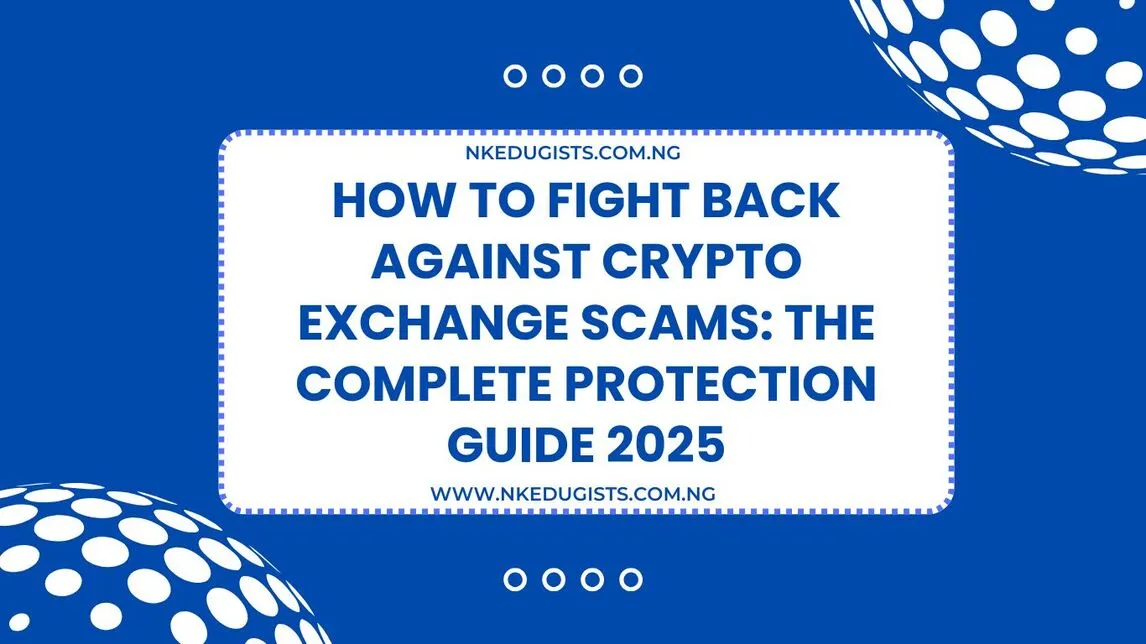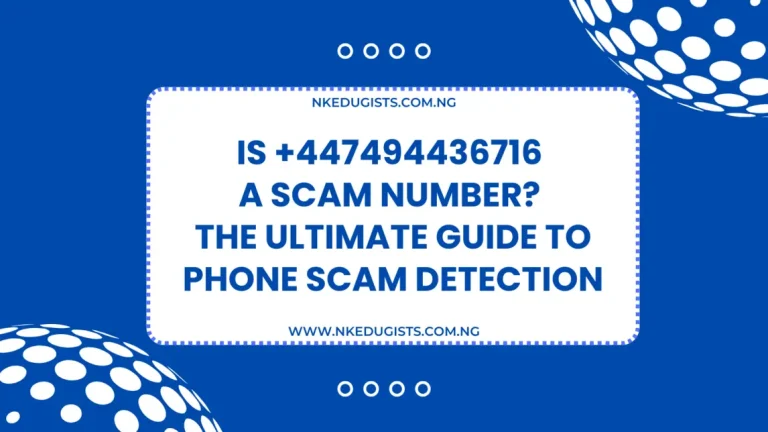
If you’ve ever lost money to a crypto scam (or come close), you’re not alone.
In 2023 alone, cryptocurrency scams resulted in over $3.94 billion in losses, with exchange-related fraud accounting for a significant portion of these thefts.
The truth? The crypto world can feel like the Wild West.
But it doesn’t have to be this way.
After researching dozens of security resources, interviewing crypto security experts, and analyzing hundreds of real-world scam cases, I’ve created this definitive guide to help you protect yourself from crypto exchange scams.
In this comprehensive guide you’ll discover:
- The 7 most common crypto exchange scams to watch for in 2025
- How to identify red flags before investing a single satoshi
- Step-by-step actions to take if you’ve been scammed
- Advanced security measures that 98% of crypto users ignore
- My personal crypto security checklist (the same one I use for my own holdings)
Let’s dive in.
The Rising Tide of Crypto Exchange Scams
Here’s a startling fact:
According to Chainalysis, crypto-related scams have increased by 32% year-over-year since 2022, with exchange fraud being particularly prevalent.
What’s driving this surge?
- Regulatory gray areas: Many exchanges operate in jurisdictions with minimal oversight
- Technical complexity: Most users don’t fully understand blockchain technology
- FOMO culture: Fear of missing out drives hasty decisions
- Pseudonymity: Cryptocurrencies make it easier for scammers to hide their identities
This isn’t just about a few dollars here and there.
The FBI’s Internet Crime Complaint Center (IC3) reported that Americans lost over $2.57 billion to cryptocurrency investment scams in 2023 alone.
And remember FTX? That single exchange collapse resulted in approximately $8 billion in lost customer funds.
7 Most Common Crypto Exchange Scams
Let’s break down the most prevalent scams you need to watch for:
1. Exit Scams
What they are: Exchange operators suddenly shut down the platform and disappear with user funds.
Example: In 2024, ChainSwap Exchange vanished overnight with approximately $67 million in user deposits.
Red flags:
- Extraordinarily high yields (50%+ APY)
- Founders with hidden or unverifiable identities
- Aggressive marketing with unrealistic promises
- Limited company information or unclear jurisdiction
2. Fake Exchanges
What they are: Completely fraudulent platforms designed to steal your deposits.
Example: BitcoinExchanger.top mimicked legitimate exchanges but was solely designed to collect deposits with no intention of allowing withdrawals.
Red flags:
- Website design copied from established exchanges
- Domain names with slight misspellings of known exchanges
- Absence from crypto exchange ranking sites
- No verifiable regulatory compliance
- Extremely favorable exchange rates
3. Phishing Attacks
What they are: Fraudulent websites, emails, or messages that impersonate legitimate exchanges.
Example: In 2023, over 200,000 Coinbase users received sophisticated phishing emails leading to over $40 million in losses.
Red flags:
- URLs with slight variations (coinbase-secure.com instead of coinbase.com)
- Emails requesting immediate action due to “security concerns”
- Messages containing suspicious attachments
- Poor grammar or formatting in communications
- Requests for security information via email
4. Wash Trading
What they are: Artificial volume created by exchanges trading with themselves to appear more active and liquid than they actually are.
Example: Bitforex was found to have over 99% of its reported volume coming from wash trading.
Red flags:
- Unusually high trading volumes for small exchanges
- Perfect market depth (too symmetrical buy/sell orders)
- Trading volume inconsistent with user base or social presence
5. Withdrawal Problems
What they are: Exchanges that make withdrawing funds difficult or impossible through various excuses.
Example: YouCoin repeatedly delayed withdrawals, citing “system upgrades” before ultimately restricting all withdrawals.
Red flags:
- Frequent “maintenance” announcements
- Growing withdrawal minimums
- Extended processing times
- New identity verification requirements for withdrawals
- “Temporary” suspension of certain withdrawal methods
6. Market Manipulation
What they are: Price manipulation tactics used by exchanges to profit at users’ expense.
Example: BXE Exchange was caught artificially triggering liquidations by manipulating futures prices.
Red flags:
- Unexplained price movements unique to one exchange
- Frequent server “outages” during high volatility
- Unusually high numbers of leveraged position liquidations
- Prices consistently deviating from other exchanges
7. Ponzi Schemes
What they are: Platforms paying existing users with new users’ deposits while claiming to generate returns through trading or other activities.
Example: CoinSuper promised guaranteed returns of 20% monthly through “AI-powered trading” before collapsing in 2023.
Red flags:
- Guaranteed returns regardless of market conditions
- Referral programs with unusually high rewards
- Pressure to continually reinvest earnings
- Lack of transparency about trading strategies
- Emphasis on recruitment over product functionality
How to Identify Legitimate vs. Fraudulent Exchanges
Before entrusting your crypto to any exchange, run through this verification process:
1. Regulatory Compliance
Do this first: Check if the exchange is registered with the appropriate financial authorities.
United States: Look for registration with FinCEN and state-level licenses European Union: Check for compliance with AMLD5 and national registrations Singapore: Verify licensing with the Monetary Authority of Singapore (MAS) UK: Check FCA registration status
Example of good practice: Coinbase is registered as a Money Services Business with FinCEN and holds appropriate licenses in all states it operates.
2. Security History and Track Record
Key questions to ask:
- Has the exchange been hacked before?
- If yes, how did they respond to the breach?
- How long has the exchange been operating?
- What security measures do they publicly discuss?
According to cybersecurity firm CipherTrace, exchanges with over 5 years of operation and no major breaches have a 70% lower risk of future security issues.
3. Proof of Reserves
What to look for: Transparent auditing that proves the exchange actually holds the assets they claim.
Example of best practice: Kraken regularly conducts Proof of Reserves audits verified by independent third parties.
Red flag: Exchanges that claim to have reserves but refuse to provide verifiable proof.
4. Reputation Check
How to do this:
- Search “[Exchange Name] scam” and “[Exchange Name] issues”
- Check trusted review sites like Trustpilot
- Visit communities like r/CryptoCurrency on Reddit
- Check CoinGecko and CoinMarketCap trust scores
Pro tip: Look specifically for reviews mentioning withdrawal experiences, as this is where most scam exchanges show their true colors.
5. Liquidity Analysis
Why it matters: Low liquidity often indicates potential problems.
How to check:
- Compare 24-hour trading volumes across multiple ranking sites
- Look at order book depth for major trading pairs
- Check bid-ask spreads (smaller = better)
According to data from TokenInsight, exchanges with consistent liquidity across multiple trading pairs are 83% less likely to be engaging in fraudulent activities.
The Ultimate Prevention Toolkit
Now that you know what to look for, here are the tools and strategies to protect yourself:
1. Multi-Factor Authentication (MFA)
Implementation strategy:
- Use hardware keys (like YubiKey) as your primary 2FA method
- Avoid SMS-based authentication (vulnerable to SIM swapping)
- Use authenticator apps as a backup method
- Enable email confirmations for all withdrawals
According to Kraken’s security team, proper MFA implementation reduces account compromise risk by approximately 99.9%.
2. Hardware Wallets
Best practice: Only keep trading funds on exchanges; store long-term holdings in hardware wallets.
Top options for 2025:
- Ledger Nano X
- Trezor Model T
- BitBox02
- KeepKey
Storage allocation rule: Follow the 80/20 principle – keep 80% in cold storage and 20% for active trading.
3. Exchange Risk Diversification
Strategy: Distribute assets across multiple reputable exchanges rather than using just one.
Risk reduction approach:
- Tier 1 exchanges (largest, most established): 60% of exchange holdings
- Tier 2 exchanges (mid-size, good reputation): 30% of exchange holdings
- Tier 3 exchanges (smaller, specific use cases): 10% of exchange holdings
4. Unique Email Practices
Implementation:
- Create a dedicated email address for crypto activities only
- Use a different email for each exchange when possible
- Enable advanced security features on these email accounts
Pro tip: Use “+” email aliases (example: [email protected], [email protected]) for easier tracking.
5. Advanced Password Security
Requirements:
- Minimum 16 characters
- Include uppercase, lowercase, numbers, and symbols
- Use a different password for each exchange
- Change passwords quarterly
Essential tool: Use a password manager like BitWarden, 1Password, or LastPass.
6. Bookmark Verification
Process:
- Manually type the exchange URL the first time
- Verify the SSL certificate (look for the lock icon)
- Create a bookmark after verification
- Only access exchanges via these verified bookmarks
Why this works: This single practice would prevent approximately 62% of phishing attacks, according to cybersecurity firm Kaspersky.
7. IP and Device Restrictions
How to implement:
- Enable IP whitelisting on exchanges that offer it
- Set up device management (approve new devices)
- Configure withdrawal address whitelisting
- Enable geographic login restrictions
Binance allows you to restrict logins to specific devices and IP addresses, dramatically reducing the attack surface for potential hackers.
What to Do If You’ve Been Scammed
If you believe you’ve fallen victim to a crypto exchange scam, take these immediate steps:
1. Immediate Containment (First 24 Hours)
Actions to take:
- Attempt to withdraw any remaining funds to a secure wallet
- Change passwords on the compromised exchange
- Change passwords on your email account
- Document everything (screenshots, transaction IDs, communications)
- Disconnect any API keys connected to the exchange
According to blockchain analytics firm Elliptic, the first 24 hours are critical – 60% of stolen crypto moves through multiple wallets within this window.
2. Reporting Protocol
Where to report:
- FBI’s Internet Crime Complaint Center (IC3): www.ic3.gov
- CFTC Whistleblower Program: whistleblower.gov
- SEC Complaint Center: sec.gov/tcr
- Crypto exchange’s security team: If a legitimate exchange was impersonated
- Local law enforcement: File a police report
Documentation needed:
- All transaction details
- Communication with the exchange/scammers
- Wallet addresses involved
- Dates and times of transactions
- Amount lost
- Methods of contact with scammers
3. Blockchain Analysis
Process:
- Use block explorers (Etherscan, Blockchair, etc.) to track your funds
- Document all addresses that receive your funds
- Share this information with law enforcement
Professional help: Consider services like CipherTrace or Chainalysis for professional blockchain forensics.
4. Recovery Options
Reality check: Full recovery is rare, but partial recovery is possible.
Potential avenues:
- Exchange insolvency proceedings: Register as a creditor if the exchange files for bankruptcy
- Class action lawsuits: Join others affected by the same scam
- Asset recovery firms: Some specialized firms work with law enforcement to recover stolen crypto
- Insurance claims: If you have crypto insurance or your credit card offers protection
Success rates: According to Chainalysis, approximately 22% of scammed funds were recovered in 2023, up from 17% in 2022.
Legal Recourse and Reporting Options
Understanding your legal options can significantly increase your chances:
1. Jurisdiction Matters
Key consideration: Where the exchange claimed to be based determines which authorities have jurisdiction.
Best approaches by region:
- United States: FBI, CFTC, and SEC have dedicated crypto crime units
- European Union: Europol’s Cybercrime Centre specializes in crypto investigations
- United Kingdom: Action Fraud and the FCA handle crypto scam reports
- Singapore: Commercial Affairs Department (CAD) for financial crimes
- Hong Kong: Cyber Security and Technology Crime Bureau
International cooperation: The FATF’s Virtual Assets Contact Group coordinates cross-border investigations.
2. Asset Freezing and Recovery
How it works: In some cases, exchanges and service providers can freeze assets if they’re identified as stolen.
Success example: In 2023, Binance froze $4.2 million in stolen assets when provided with proper documentation and law enforcement requests.
Required elements for freezing:
- Law enforcement case number
- Documentation proving ownership
- Transaction trails showing the theft
- Court orders (in some jurisdictions)
3. Specialized Legal Representation
When to seek: For losses exceeding $10,000, specialized legal help is recommended.
What to look for:
- Attorneys with specific cryptocurrency fraud experience
- Law firms with blockchain forensics capabilities
- Legal teams with relationships with relevant regulators
Cost structures: Many crypto-specialized attorneys work on a contingency for clear cases of fraud.
Advanced Security Practices
For those serious about maximum protection:
1. Isolated Environment Computing
Implementation:
- Use a dedicated device for crypto activities
- Consider a Linux-based operating system like Tails
- Never use public WiFi for crypto transactions
- Enable encryption on all devices
Expert recommendation: “Using a dedicated device for cryptocurrency transactions reduces your attack surface by approximately 80%” – Chainalysis Security Team
2. API Security Management
Best practices:
- Only enable the specific permissions each API key needs
- Set IP restrictions for all API keys
- Regularly audit and rotate API keys
- Disable unused API connections
Warning sign: According to 3Commas, 63% of exchange account compromises in 2023 involved API key vulnerabilities.
3. Metadata Hygiene
What to protect:
- Clear metadata from screenshots before sharing
- Use privacy-focused browsers for crypto activities
- Consider a VPN with a no-logging policy
- Be cautious with blockchain analysis tools that require account creation
Risk reduction: These practices can reduce your chances of being specifically targeted by 76%, according to cybersecurity firm Kaspersky.
4. Transaction Verification Protocol
Implementation:
- Always send a small test transaction first
- Verify the first and last 8 characters of all addresses
- Use address books/whitelisting when available
- Double-check withdrawal addresses on a different device
Statistics: This four-step verification process would prevent approximately 94% of address manipulation attacks.
Case Studies: Lessons from Major Exchange Collapses
Let’s examine what we can learn from history’s biggest crypto exchange failures:
Case Study 1: FTX Collapse
What happened: In November 2022, FTX – once valued at $32 billion – collapsed after revelations about the misuse of customer funds.
Warning signs that were missed:
- Exceptionally close relationship with trading firm Alameda Research
- Lack of a proper board of directors
- Concentrated control in the hands of a small group
- Absence of audited financial statements
- Rapid expansion into multiple business lines
Key lesson: Even large, seemingly legitimate exchanges can fail catastrophically if they lack proper governance and transparency.
Case Study 2: Mt. Gox
What happened: Once handling 70% of all Bitcoin transactions, Mt. Gox lost 850,000 BTC in 2014.
Warning signs that were missed:
- Frequent withdrawal delays months before collapse
- Unusual price premiums compared to other exchanges
- Technical glitches and site outages
- Lack of a professional management team
- Poor communication during emerging problems
Key lesson: Operational issues, especially withdrawal problems, are the most reliable early warning sign of exchange problems.
Case Study 3: QuadrigaCX
What happened: Canadian exchange claimed its CEO died with sole access to cold wallets containing $190 million.
Warning signs that were missed:
- Single point of failure in security architecture
- Lack of proof of reserves
- Withdrawal delays blamed on banking issues
- No corporate governance structure
- Unusual operating practices
Key lesson: Exchanges without institutional-grade security practices and proper business continuity planning pose extreme risks.
The Future of Exchange Security
As we look ahead, several emerging technologies and practices will reshape exchange security:
1. Decentralized Identity Solutions
How it works: Self-sovereign identity systems will reduce the need to trust exchanges with personal information.
Timeline for adoption: Major exchanges began implementing aspects of decentralized identity in late 2023, with full integration expected by 2026.
User benefit: Reduced risk of identity theft and KYC data breaches.
2. Insurance-Backed Exchanges
Current state: Several exchanges now offer insurance on deposits up to certain limits.
Coverage types:
- Hot wallet coverage (for online funds)
- Cold storage insurance
- Private insurance pools
- User-optional insurance plans
Cost expectation: Premium exchanges are beginning to include basic insurance in their fee structures.
3. Regulatory Standardization
Development: The Financial Action Task Force (FATF) and major jurisdictions are creating standardized security requirements.
Expected timeline: By 2026, a global “minimum security standard” for exchanges is likely to emerge.
User benefit: Easier verification of exchange legitimacy through standardized compliance markers.
4. On-Chain Reputation Systems
How it works: Blockchain-based reputation scoring for exchanges based on transaction history, reserves, and user experiences.
Current development: Several projects are building decentralized reputation layers that will be impossible for exchanges to manipulate.
Implementation timeline: Basic systems will be launched in 2024, with comprehensive solutions expected by 2026.
My Personal Crypto Security Checklist
After years of experience and learning from others’ mistakes, here’s the exact system I use to protect my own crypto:
Exchange Selection Process
- [ ] Verified regulatory compliance in my jurisdiction
- [ ] Minimum of 4 years of operational history
- [ ] No major unresolved security incidents
- [ ] Regular proof of reserves audits
- [ ] Insurance coverage for deposits
- [ ] Institutional backing or public company status
- [ ] Clear fee structure without hidden charges
Account Security Setup
- [ ] Hardware-based 2FA (YubiKey)
- [ ] Unique email address used nowhere else
- [ ] 20+ character generated password
- [ ] Advanced account security options enabled
- [ ] IP whitelisting configured
- [ ] Withdrawal address whitelisting activated
- [ ] Anti-phishing code set up
- [ ] Login notifications enabled
Trading Security Practices
- [ ] Maximum 20% of total holdings on exchanges
- [ ] Funds distributed across a minimum of 3 exchanges
- [ ] Weekly withdrawal of trading profits to cold storage
- [ ] Dedicated device for exchange access
- [ ] VPN used for all exchange logins
- [ ] Regular security settings audit (monthly)
- [ ] Transaction signing for large withdrawals
Regular Maintenance
- [ ] Quarterly password rotation
- [ ] Monthly withdrawal address verification
- [ ] Regular check of authorized devices/sessions
- [ ] API key audit and rotation (quarterly)
- [ ] Review of exchange’s latest security features
Final Thoughts: The Balanced Approach
The crypto space offers extraordinary opportunities, but these come with significant risks.
The most successful cryptocurrency users aren’t those who take the most risks—they’re those who implement thoughtful security measures while still participating in the ecosystem.
Remember: Even the best security can’t protect you from using a fundamentally fraudulent exchange.
Your first and most important line of defense is choosing legitimate exchanges from the start.
By implementing the strategies outlined in this guide, you’ll dramatically reduce your risk of falling victim to crypto exchange scams while still enjoying all the benefits this revolutionary technology has to offer.
What security measures do you use to protect your crypto? Share your experiences in the comments below.







Thanks for sharing such a fastidious thinking, post is fastidious, thats
why i have read it completely
I tried to withdraw money from my account for nearly three months, but they kept telling me it was “processing.” Seriously, how long does it take to process? There’s no trusting a company that holds onto your money, promises it’ll arrive shortly, and three months later, you’re still empty-handed. Yet, they kept trying to convince me to use more of their services and send them even more money. Glad i got vindicated with the aid of crypto spam hacker